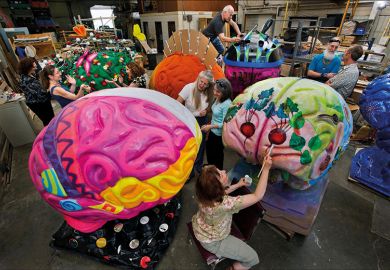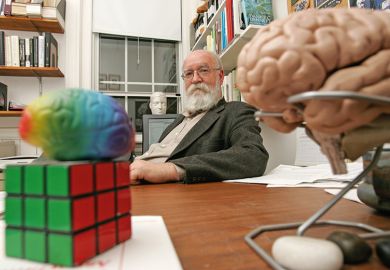Upon opening St John’s Gospel, Goethe’s Faust is inspired to translate its first sentence not as “In the beginning was the Word” but “In the beginning was the Mind”, because “the Word does not deserve the highest prize”. He is next, momentarily, tempted to change his translation to “In the beginning was the Force” before finally settling for “In the beginning was the Act”. Content at last, he concludes that “Now it is exact.”
In this enthralling new book, Barbara Tversky similarly argues for what we might call an action-first psychology, according to which thought, perception, emotion and language are all shaped by our actions in space and time. Put another way, our interactive behaviour causes us to see the world a certain way and thereby also influences the way we think, feel and talk.
Tversky, who is emerita professor of psychology at Stanford University, proceeds by way of articulating her Nine Laws of Cognition: (1) no benefits without costs; (2) action moulds perception; (3) feeling comes first; (4) the mind can override perception; (5) cognition mirrors perception; (6) spatial thinking is the foundation of abstract thought; (7) the mind fills in missing information; (8) when thought overflows the mind, the mind puts it back into the world; and (9) we organise stuff in the world the way we organise stuff in our minds.
The book is not so much a sustained argument in defence of these laws as a cornucopia of innumerable observations, experiments, anecdotes and other illustrations of cases in which deeds seem to fashion our minds through perception and emotion. These range widely, from facts about animal gestures and child development to research on creativity, architecture and design. With the exception of a baffling section on why Immanuel Kant’s “big thoughts” on space, time and causality should be extended to include emotion, Tversky’s examples draw on her impressive research history and expertise, thereby rendering her general thesis immensely plausible.
While the overall message of Mind in Motion is meant to be a radical one, in certain crucial ways it isn’t radical enough. This is because Tversky frames her argument within a kind of dualistic language that seems to reify the mind, at times treating it as if it were an agent-like entity which stands outside the world and represents it by means of maps and other forms of informational content. She thus holds back from fully embracing the stance of her closest philosophical allies who champion a “4E cognition”, according to which all thought should be seen as embedded, embodied, enactive and extended in the world.
This Janus-faced stance is best encapsulated by the fact that the first half of the book (on how we think about space) is titled “The World in the Mind” and the second half (on how we use space to think) “The Mind in the World”. Accordingly, its account of spatial thinking is as much a case of squashing our worldly interactions back inside the mind as it is of describing how the mind seeps out into behavioural reality. In the beginning was the act, but Tversky leaves the last word to the mind.
Constantine Sandis is professor of philosophy at the University of Hertfordshire and the author of The Things We Do and Why We Do Them (2012) and Character and Causation: Hume's Philosophy of Action (2018).
Mind in Motion: How Action Shapes Thought
By Barbara Tversky
Basic Books
384pp, £32.00
ISBN 9780465093069
Published 21 May 2019
Register to continue
Why register?
- Registration is free and only takes a moment
- Once registered, you can read 3 articles a month
- Sign up for our newsletter
Subscribe
Or subscribe for unlimited access to:
- Unlimited access to news, views, insights & reviews
- Digital editions
- Digital access to THE’s university and college rankings analysis
Already registered or a current subscriber?








